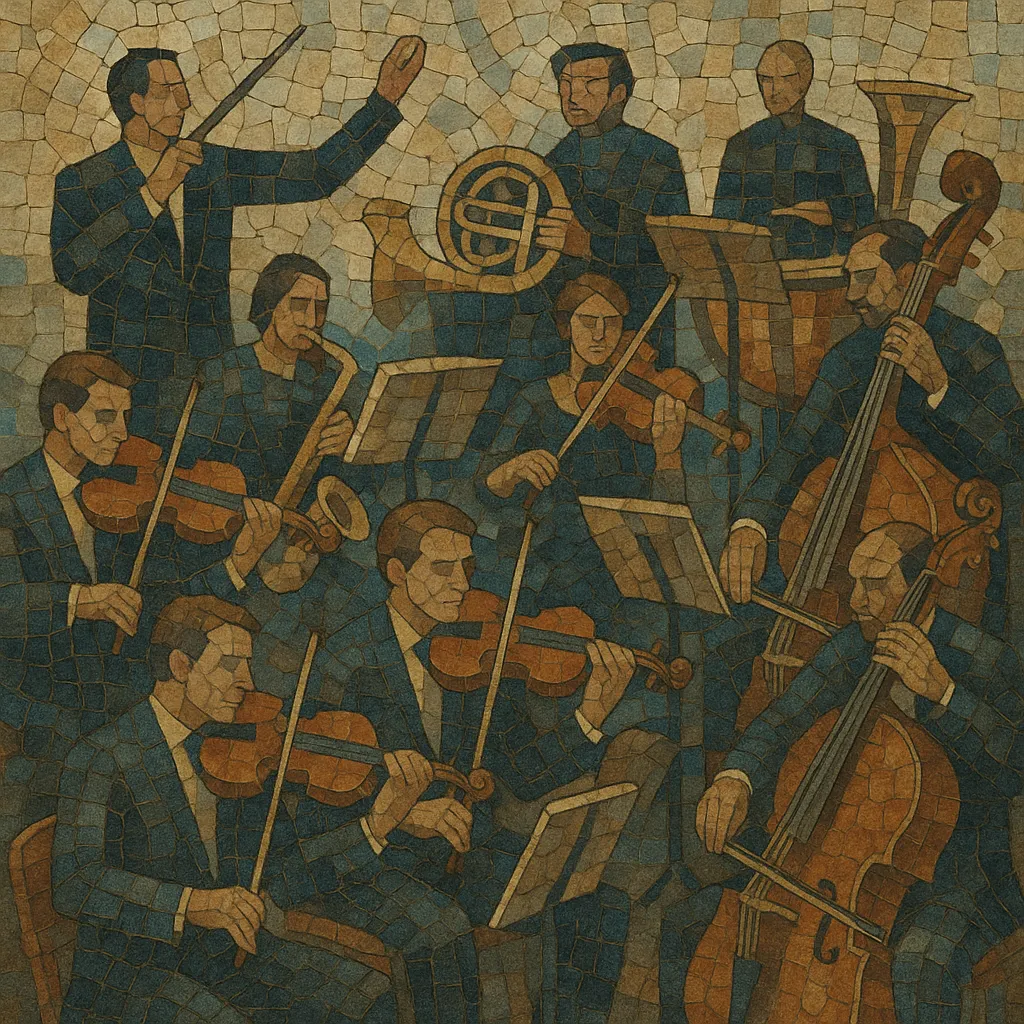Orchestral music is music written for and performed by an orchestra—a large ensemble built around strings (violins, violas, cellos, double basses) with woodwinds, brass, and percussion, and often augmented by harp, piano/celesta, and other color instruments. It emphasizes orchestration (the art of distributing musical ideas among instruments) to shape timbre, texture, and dynamics at scale.
It encompasses many forms, including overture, suite, symphony, concerto, tone poem, and ballet score. Hallmarks include wide dynamic range, layered textures (melody, countermelody, accompaniment), register separation, and motivic development. Although rooted in the Western classical tradition, orchestral writing continues to evolve, powering concert hall repertoire as well as cinematic, game, and media music.
Orchestral music coalesced in the 1600s as court and church ensembles in Italy and France standardized the violin family and continuo practice. Early orchestras accompanied opera and ballet (e.g., Lully at the French court) and played instrumental forms like the suite and concerto grosso (Corelli, Vivaldi).
By the mid-1700s, the orchestra’s makeup stabilized around strings with pairs of winds and horns. Composers such as Haydn and Mozart codified the symphony and concerto as central orchestral forms, emphasizing clarity, balanced phrases, and transparent textures.
Beethoven expanded the orchestra’s power and dramatic breadth, paving the way for Romantic color and scale. Berlioz and Wagner enlarged forces, refined orchestration, and embraced programmatic narrative; Tchaikovsky, Brahms, and later Mahler explored lyricism, national idioms, and monumental architectures. The tone poem (Liszt, Richard Strauss) emerged as a major single-movement form.
Orchestral color diversified with Impressionists (Debussy, Ravel), rhythmic and harmonic innovations (Stravinsky), and new extended techniques. National schools, neoclassicism, and experimental approaches broadened the palette. In parallel, orchestral methods migrated into film and later game scoring, while contemporary composers leverage both acoustic ensembles and hybrid electronics. Today, orchestral writing bridges concert tradition and media, with flexible forces and cross-genre collaboration.
Start with a standard symphonic setup: strings (Vln I/II, Vla, Vc, Cb), woodwinds (2-3 flutes, oboes, clarinets, bassoons + auxiliaries), brass (4 horns, 2-3 trumpets, 3 trombones, tuba), percussion (timpani plus color instruments), and optional harp, piano/celesta. Choose forces appropriate to style (Classical clarity vs. Romantic heft) and the venue.
Give the melody clear projection (often high strings or winds), support it with countermelodies and inner voices, and anchor with basses/cellos. Use register separation and doubling for weight: unison for strength, octaves for brilliance, and selective doublings (e.g., clarinet + violas) for color. Exploit idiomatic techniques—strings (pizzicato, tremolo, mutes, harmonics), winds (flutter-tongue, trills), brass (mutes, chorales, fanfares), percussion (timpani pedal tones, mallet color) to shape timbre and dynamics.
Employ functional harmony for classical clarity or modal/extended harmony for modern color. Build momentum with rhythmic ostinati, hemiolas, or metric shifts; contrast tutti climaxes with chamber-like passages. Common forms include sonata form (symphonic movements), ternary/arch, theme and variations, and through-composed tone poems.
Write parts that breathe: phrase lengths accommodating winds, brass stamina, and string bowing. Avoid unplayable leaps in extreme registers and over-thick textures; leave space for clarity. Observe transpositions (horns, clarinets, trumpets) and standard score order. Mark articulations, dynamics, and cues precisely; provide rehearsal marks and clear layout for part extraction.
For mockups, layer high-quality sample libraries with realistic articulation switching and humanized timing; mix for depth with stage/reverb placement. If writing for live players, consult principal parts early, test voicings at the piano, and revise for balance after first read-throughs.


